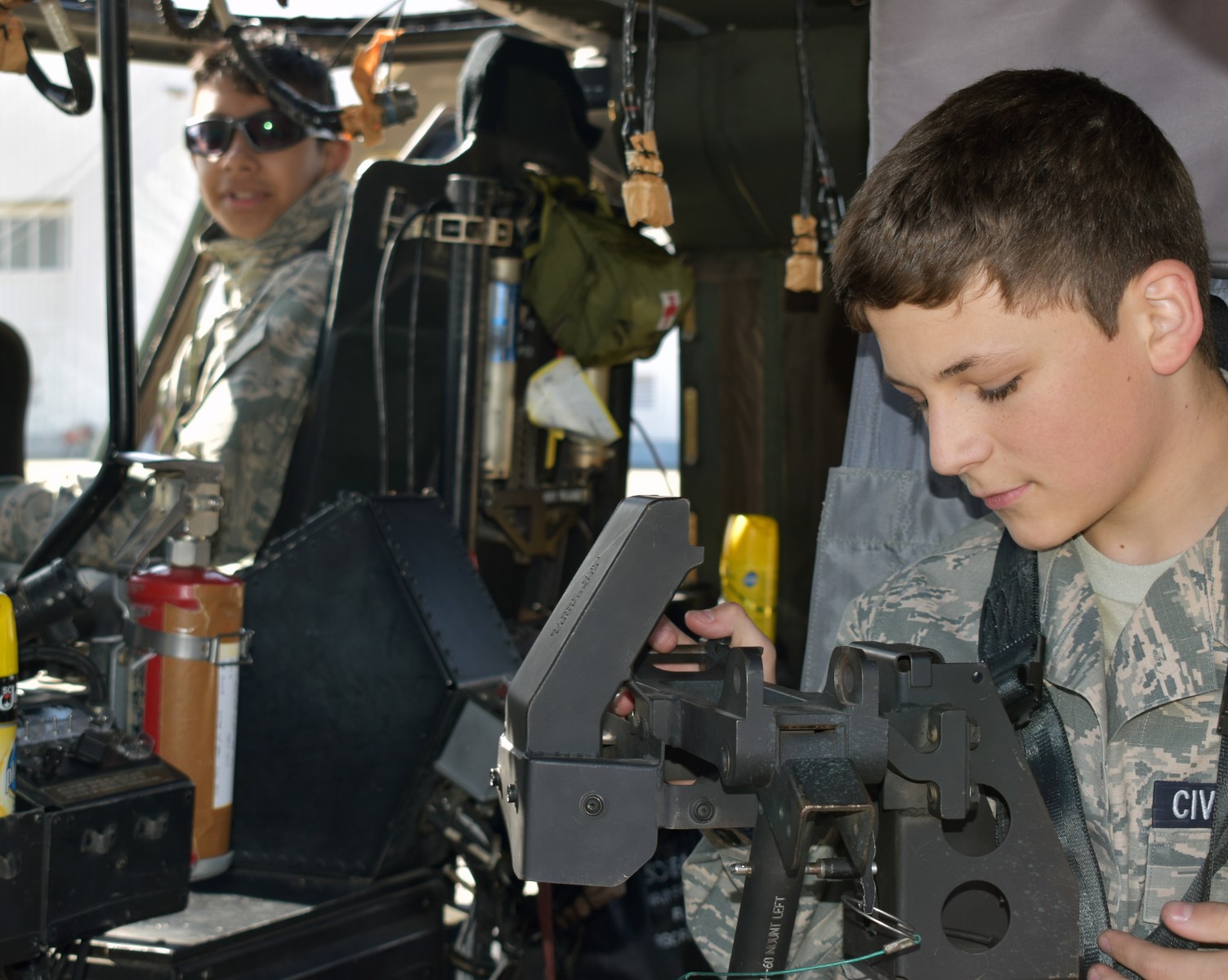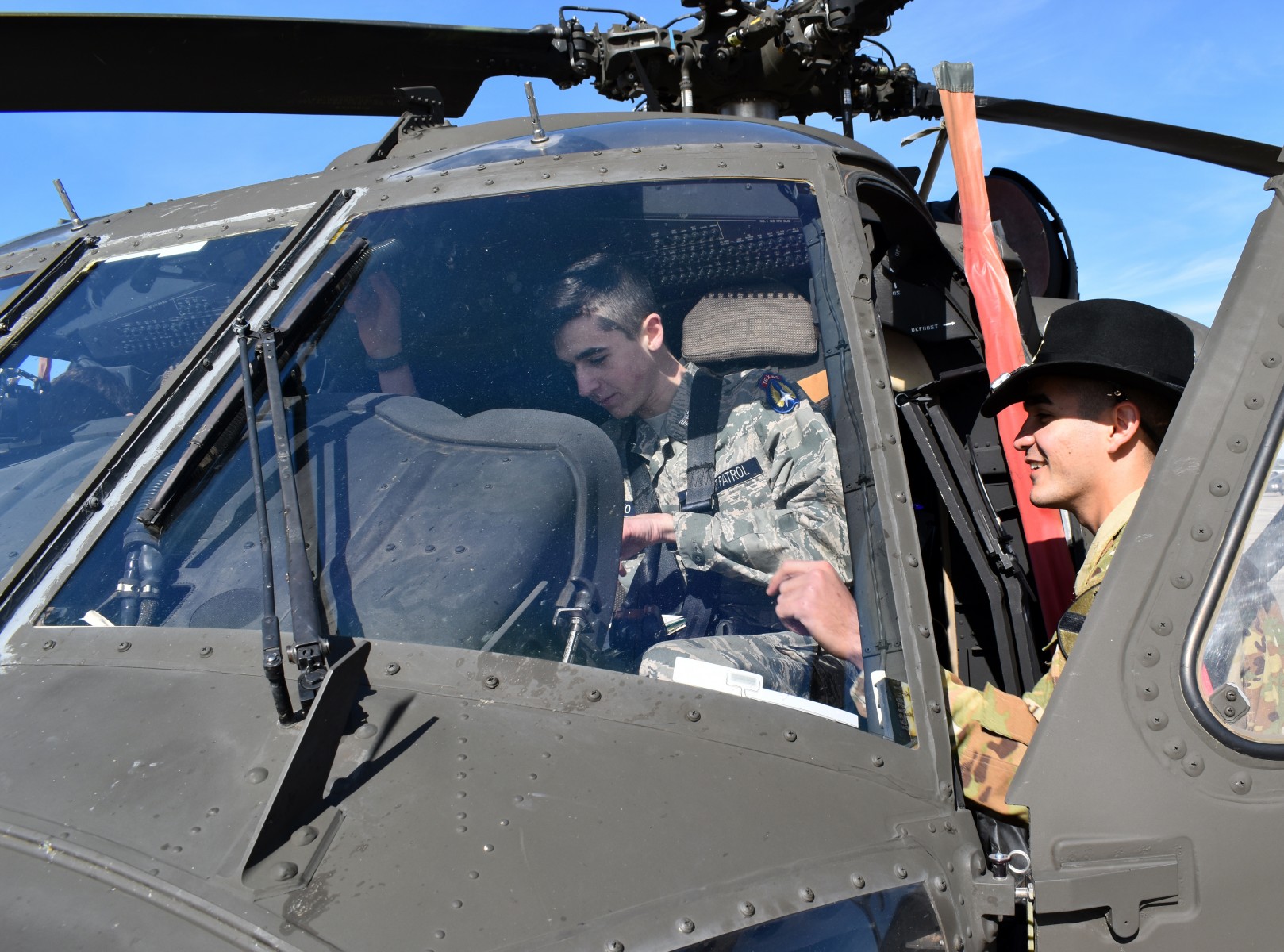
Texas Cadets Explore Army Choppers During Ft. Hood Visit
Maj. Steve Alvarez
Public Affairs Officer
Pegasus Composite Squadron
Texas Wing

 Cadets from the Texas Wing’s Pegasus Composite Squadron recently got an up-close look at military aviation, U.S. Army-style, when they visited the 2nd Battalion, 227th Aviation Regiment, 1st Air Cavalry Brigade, 1st Air Cavalry Division at Fort Hood.
Cadets from the Texas Wing’s Pegasus Composite Squadron recently got an up-close look at military aviation, U.S. Army-style, when they visited the 2nd Battalion, 227th Aviation Regiment, 1st Air Cavalry Brigade, 1st Air Cavalry Division at Fort Hood.
“We had an incredible visit with the men and women of the 1st Air Cavalry Brigade,” said Maj. Dennis Eibe, the Pegasus squadron’s deputy commander. “Our cadets learned a lot about Army aviation. It was an eye-opener for a lot of the cadets, who likely had not considered Army aviation as a viable career option.”
They learned about the missions and capabilities of the Apache, Chinook and Black Hawk helicopters and later got to explore the aircraft and talk to the pilots one-on-one.
“The fact that you are here, early on a Saturday morning, and wearing a uniform says something,” Army Lt. Col. Jason Raub, 2nd Battalion commander, told the cadets. He later gathered them in the belly of what he called the “best aircraft in the U.S. Army” – the CH-47 Chinook, which he pilots – and told them about missions he has flown, including his favorite, delivering humanitarian supplies in the Bahamas this past summer.
The cadets were surprised to learn that three of the Army pilots hosting them had CAP connections. Two belong to the Texas Wing’s Apollo Composite Squadron, and the third had been a cadet.
“I joined CAP shortly after my 18th birthday with about 60 hours under my belt as a private pilot during my freshman year of college,” Chief Warrant Officer 2 Jahan Rabii said. “I went to a few meetings … and quickly fell in love with the CAP mission sets.”
Today, Rabii is a CAP second lieutenant and assistant deputy commander for the Apollo squadron’s cadets. He’s also a mission pilot and a search and rescue officer – a sharp contrast to his day job as an UH-60M assault helicopter pilot in an assault helicopter battalion. He moves assault forces to engage and destroy enemy forces.
Rabii and Army Capt. Christine Hogan, who like Rabii is a Black Hawk pilot except with a different mission, showed the cadets the chopper’s various models.
“It was my pleasure to host the cadets,” said Hogan said, a medevac pilot and also a senior member in the Apollo squadron.
Chief Warrant Officer 5 Stephen Napoli, an Apache pilot and instructor, said the cadets’ level of knowledge about aviation and the questions they asked showed advanced awareness.
“I was really surprised at how much they knew and at some of the questions I was asked,” Napoli said. “It’s impressive.”
The cadets, parents and senior members in attendance felt the same way about their Army hosts.
“Wow, what an opportunity available to the cadets,” parent Dan Guest said. “I know that Ian will never forget this trip,” he added about his son’s visit. “Knowing that some of the aviators we met that day who were cadets in CAP when they were younger is a strong testament to the CAP cadet program.”
Rabii agrees about CAP’s value. During the visit he was overheard trying to recruit a fellow officer to join the organization.
“My time with CAP is what set me apart,” Rabii said. Though he grew up in an aviation-focused family – his grandfather led the Iranian Air Force and his aunt is a shuttle astronaut – he credits CAP for his rise as an Army pilot.
“Without CAP I absolutely would not have become an Army aviator,” he said. “In fact, I had little idea of how to enter military aviation before becoming a member of CAP.
“I spent a good deal of time daydreaming about being a hotshot military pilot in my youth, but not until I became a full-fledged mission pilot with Civil Air Patrol, getting called out to fly actual searches, did I see the possibility of such a goal coming to light,” he said.
As a CAP pilot Rabii was selected to be one of the pilots in Operation Falcon Virgo, a series of exercises designed to test airspace security where CAP pilots and military and civilian contractors flew missions in the White Sands Missile Range restricted airspace in New Mexico.
“I had the opportunity to meet and rub elbows with some great military pilots, some of which had moved on to becoming CAP pilots after retirement,” he said. “Those connections eventually led me to CAP members who actively were part of Army aviation.
“They sold the idea of becoming an Army aviator to me … three months later I applied, and six months later I swore in as a warrant officer candidate on my way to flight school.
“CAP offers those interested in aviation a step up above the crowded sea of qualified applicants in aviation,” Rabii said. “It is a very competitive field however you go about it, and having CAP in your background is something that really makes you stand out.
“CAP is what opened more doors than I ever imagined possible into an aviation career, and I highly recommend it for whomever sees aviation in their future in any way,” Rabii said.
Cadet Senior Airman Ian Guest, who hopes for a U.S. Air Force career, said he enjoyed learning about the Army’s aviation missions.
“I thought it was cool that some of the pilots had a connection with CAP and … the pilots taught us a lot about their aircraft that was interesting information,” Ian said. “They didn’t just say the usual stuff, like how fast it goes and how high. They told us stuff like how the Chinook was capable of landing on water and why some models cannot.”
Rabii beamed when he showed the cadets the Black Hawk, and he challenged them to ask about anything on the chopper.
Not to be outdone, one cadet already knew some of the preflight checks on the aircraft.
“That CAP visit to my airfield at Fort Hood was incredible,” Rabii said. “Watching those cadets with wide eyes climbing all over the most sophisticated and powerful helicopters in the world was awesome.
“I felt extremely privileged being afforded the opportunity that in some way may have been directly correlated in inspiring a future military aviator. I never forget the moments that inspired me, and with hope maybe those cadets won't forget, either.”
Photos by Maj. Steve Alvarez






